
views
Using Ammonia Test Strips
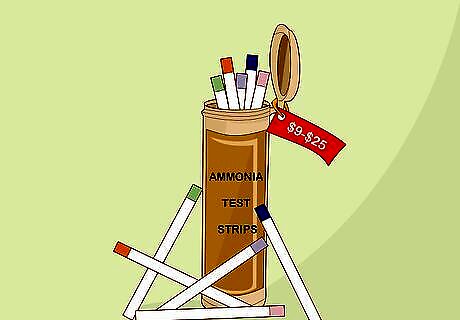
Purchase a container of ammonia test strips. These strips can be purchased at big box pet stores since they are used mostly to test levels in aquariums. They can also be purchased from many online retailers. While 5-in-1 strips will test for nitrite, which is a byproduct of ammonia, they do not check ammonia levels. An ammonia test is conducted differently and you'll need to purchase separate strips for that. Prices for ammonia strips can range from $9 to $25.

Dip the padded end of the test strip in the water for 30 seconds. This will ensure the pad absorbs enough water to get an accurate read of the ammonia levels. Move it in an up and down motion so water covers the entirety of the pad. Shake off any excess water when you remove the strip so it does not drip.

Hold the strip flat with the padded side up for 30 seconds. During this step, the ammonia from the water is converting into gas. The end of the test strip at this time will start to change colors dependent on the level of ammonia present.
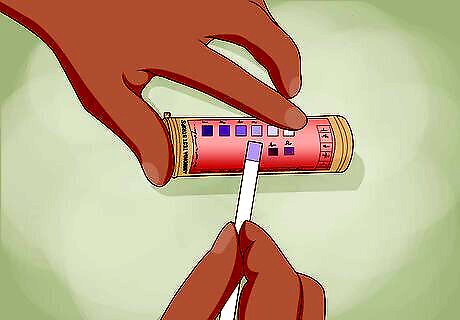
Compare the color at the end of the strip to the scale on the container. Match the color of the strip as best as you can to the scale provided on the test strip packaging. The colors will vary depending on which brand of test strips that you’ve purchased, but many of the kits go from yellow (low levels of ammonia) to blue (high levels of ammonia). If the result shows that the water has a high level of ammonia, you should take steps to remove it immediately.
Detecting with an Ammonia Sensor

Use an infrared (IR) sensor for long-term stability. IR sensors use infrared radiation to find the levels of ammonia in an area and can be purchased through online retailers. They do not need to be reset or calibrated as often and they do not degrade from large amounts of ammonia exposure, though they are large and need to be protected from changes in temperature. Optical filters use infrared light to sense the ammonia levels. ”Photo-acoustic” detectors use a small microphone to measure the changes in pressure to detect the ammonia molecules.
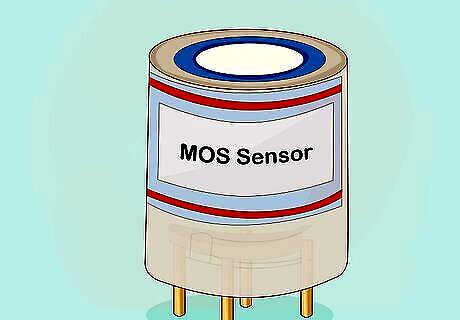
Install a chemisorption (MOS) sensor to detect contaminants. A MOS sensor uses electricity to determine if there is ammonia present. This type of sensor is popular to use due to their extended operational life and being durable to high ammonia concentrations. MOS sensors can be purchased through online stores. MOS sensors will detect other contaminants, such as carbon monoxide or hydrogen, so you may have false alarms if you are only trying to determine the ammonia levels.
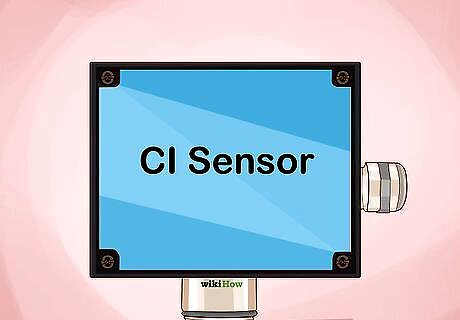
Use a charge carrier injection (CI) sensor in humid conditions. CI sensors absorb ammonia molecules to detect the specific concentration. They are known to work for 5 years or more and are suitable in conditions where humidity often changes, and they can be purchased online. CI sensors should only be used to detect high concentrations of ammonia and may not detect lower amounts.
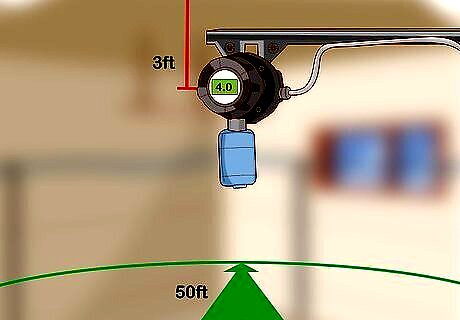
Install the sensor 1 to 3 feet (.3 to .9 meters) from the ceiling. Ammonia is lighter than air, so it will be more concentrated near the ceiling. Install the ammonia sensor near the ceiling for more accurate detection. The maximum radius of a sensor is around 50 feet (15.24 meters), so use multiple if a large area needs to be covered.
















Comments
0 comment